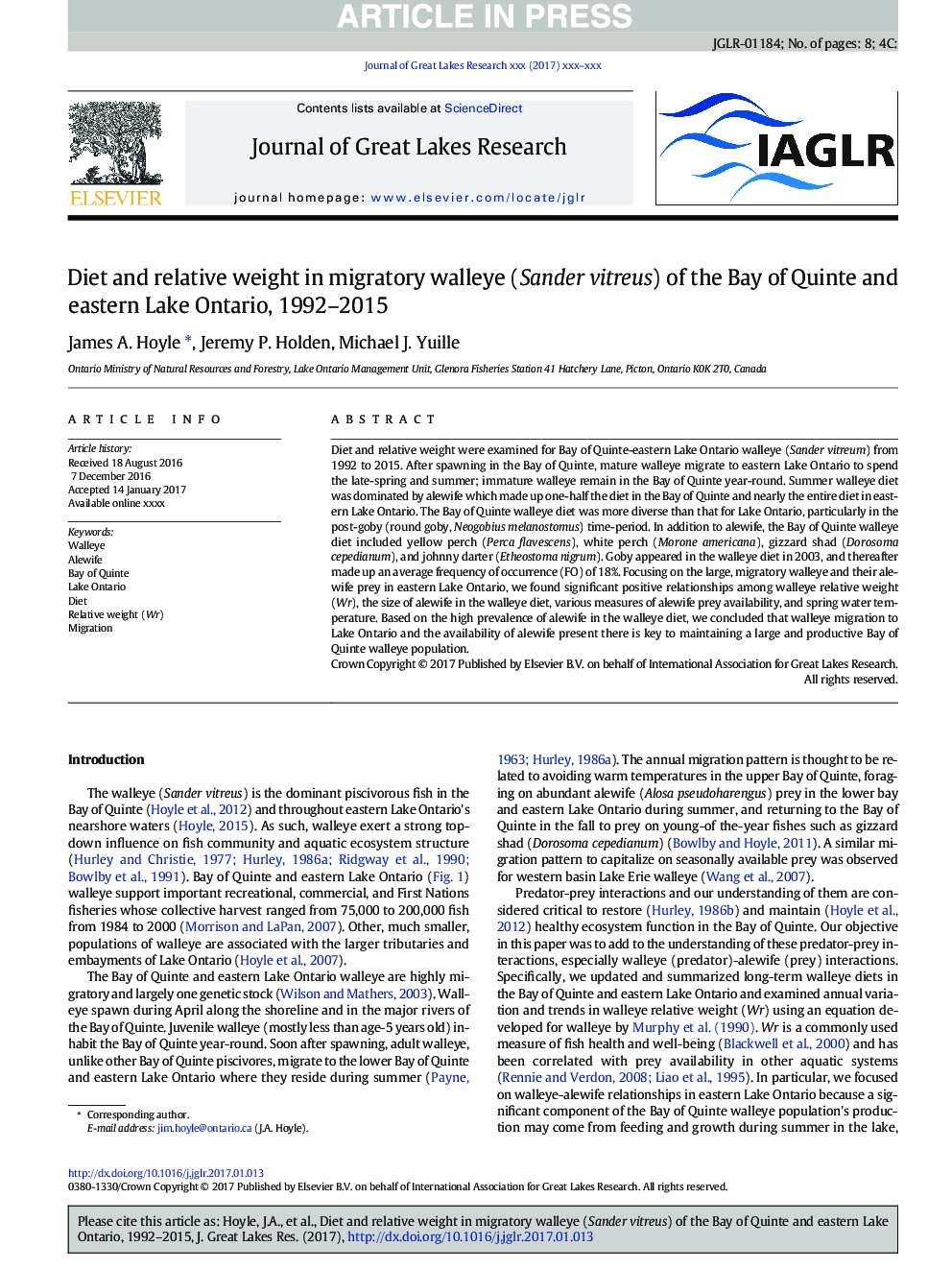| Article ID | Journal | Published Year | Pages | File Type |
|---|---|---|---|---|
| 5744596 | Journal of Great Lakes Research | 2017 | 8 Pages |
Abstract
Diet and relative weight were examined for Bay of Quinte-eastern Lake Ontario walleye (Sander vitreum) from 1992 to 2015. After spawning in the Bay of Quinte, mature walleye migrate to eastern Lake Ontario to spend the late-spring and summer; immature walleye remain in the Bay of Quinte year-round. Summer walleye diet was dominated by alewife which made up one-half the diet in the Bay of Quinte and nearly the entire diet in eastern Lake Ontario. The Bay of Quinte walleye diet was more diverse than that for Lake Ontario, particularly in the post-goby (round goby, Neogobius melanostomus) time-period. In addition to alewife, the Bay of Quinte walleye diet included yellow perch (Perca flavescens), white perch (Morone americana), gizzard shad (Dorosoma cepedianum), and johnny darter (Etheostoma nigrum). Goby appeared in the walleye diet in 2003, and thereafter made up an average frequency of occurrence (FO) of 18%. Focusing on the large, migratory walleye and their alewife prey in eastern Lake Ontario, we found significant positive relationships among walleye relative weight (Wr), the size of alewife in the walleye diet, various measures of alewife prey availability, and spring water temperature. Based on the high prevalence of alewife in the walleye diet, we concluded that walleye migration to Lake Ontario and the availability of alewife present there is key to maintaining a large and productive Bay of Quinte walleye population.
Related Topics
Physical Sciences and Engineering
Earth and Planetary Sciences
Earth and Planetary Sciences (General)
Authors
James A. Hoyle, Jeremy P. Holden, Michael J. Yuille,
